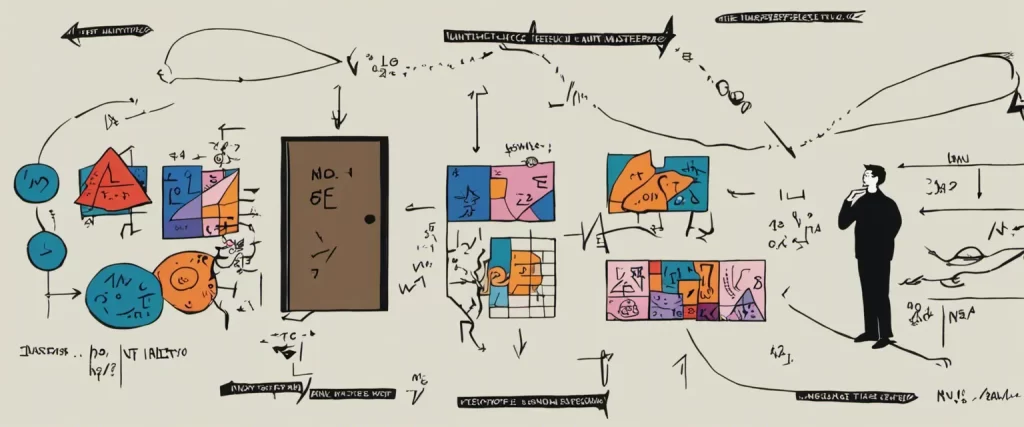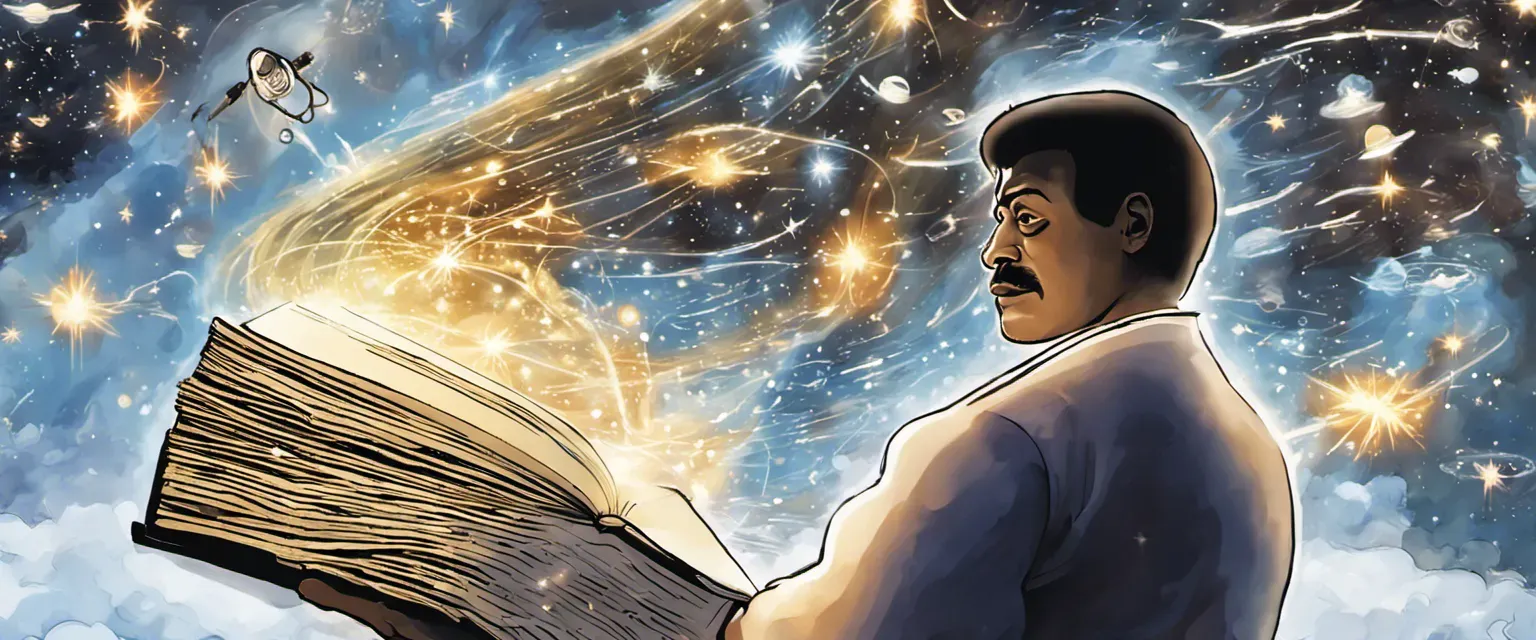——Astrophysics for People in a Hurry by Neil deGrasse Tyson & How To by Randall Munroe
In our fast-paced world, where time seems to flow relentlessly, our desire to absorb knowledge and gain insights is often hindered by the scarcity of hours in a day. Two authors, Neil deGrasse Tyson and Randall Munroe, recognized the need for concise yet engaging literature that appeals to readers in a hurry. Briefing us on highly diverse subjects, Tyson’s “Astrophysics for People in a Hurry” and Munroe’s “How To” offer fascinating glimpses into two distinct realms of knowledge—astrophysics and life’s practical quandaries, respectively.
In his book, “Astrophysics for People in a Hurry,” renowned astrophysicist Neil deGrasse Tyson endeavors to unravel the mysteries of the cosmos by presenting complex scientific concepts in a way that is accessible to everyone. Through concise explanations, he imparts profound insights into the vastness of the universe, its inner workings, and our place within it. Readers embark on a cosmic journey, delving into the realms of black holes, dark matter, and the origin of the universe itself.
Conversely, Randall Munroe’s “How To” accommodates readers who seek practical knowledge, offering humorous yet practical advice on a variety of topics. Munroe, best known for his webcomic “xkcd,” utilizes his distinctive illustration style, accompanied by witty remarks, to provide unconventional guidance on life’s perplexing questions. From navigating complex situations like building a lava moat, to pondering seemingly trivial inquiries such as the optimal density for packing pickles, Munroe presents an amalgamation of scientific principles, ingenuity, and occasional absurdity.
While the subjects these two books explore might seem worlds apart, they both cater to the restless minds of individuals who crave knowledge but lack the luxury of time. “Astrophysics for People in a Hurry” and “How To” offer readers an opportunity to glean insight and curiosity without sacrificing precious minutes from their demanding schedules. By delving into these works, readers can discover intellectual enrichment at an accelerated pace, ensuring that time does not hinder their quest for knowledge.
Within this comparative study, we will explore the unique qualities and approaches employed by both authors. By examining the style of writing, structure, and overall impact of the works, we seek to unravel the similarities and differences between “Astrophysics for People in a Hurry” and “How To.” Additionally, we will delve into the underlying motivations of Tyson and Munroe, deciphering the driving forces behind their efforts to simplify complex information – one through astrophysics and the other through humorous problem-solving.
Through this exploration, we aim to provide readers with a comprehensive analysis of these intriguing works. Whether one’s passion lies in unraveling the mysteries of the universe or tackling life’s everyday conundrums, this comparative study will shed light on the captivating worlds brought forth by Tyson and Munroe.
Brief Summary of Two Books
Astrophysics for People in a Hurry by Neil deGrasse Tyson
Astrophysics for People in a Hurry by Neil deGrasse Tyson is a concise and accessible book that aims to provide a brief overview of the fascinating field of astrophysics. In this book, Tyson presents complex scientific ideas in a simplified manner, making it easier for readers to grasp the core concepts.
The book is divided into thirteen chapters, each addressing different topics ranging from the Big Bang theory and the birth of the universe, to the fundamental elements of matter and the formation of stars and galaxies. Tyson briefly discusses various astrophysical phenomena such as black holes, dark matter, and dark energy, shedding light on the mysteries that still perplex scientists.
Throughout the book, Tyson also explores the human connection with the cosmos, discussing how astrophysics impacts our lives and culture. He delves into the profound significance of our existence in the vastness of the universe and how our curiosity has led to scientific progress.
Astrophysics for People in a Hurry is not a comprehensive guide to astrophysics, but rather a brief, engaging introduction to the subject. It provides readers with a basic understanding of key astrophysical concepts without overwhelming them with technicalities or jargon, making it an ideal choice for individuals with a limited amount of time or prior knowledge.
Ultimately, Tyson’s book serves as a brilliant gateway into the captivating world of astrophysics, leaving readers with a sense of wonder and curiosity about the mysteries of the cosmos.
How To by Randall Munroe
“How To” by Randall Munroe is a non-fiction book that combines science, humor, and practical advice to provide readers with amusing and informative guides on a wide range of topics. Munroe, the creator of the popular webcomic xkcd, uses his background in physics and engineering to answer seemingly strange or absurd questions like “How to jump really high?”, “How to dig a hole?”, or “How to take a selfie with a Raptor”.
The book is divided into chapters, each addressing a different theme, such as “Home” or “Food”, and within these chapters, Munroe presents curious scenarios and explores the science and logic behind them. With his trademark stick figure drawings and witty writing style, he breaks down complex concepts into simple and entertaining explanations, making even the most technical subjects accessible to all readers.
Emphasizing the absurdity of some of the questions, Munroe approaches each topic with scientific rigor, researching and consulting experts to provide accurate and sometimes surprising answers. Along the way, he also delves into historical events, famous experiments, and curious anecdotes that relate to the subject at hand, further enriching the reader’s understanding.
In addition to scientific explanations, “How To” also includes practical tips, step-by-step instructions, and cautionary warnings, giving readers the necessary information to experiment safely or avoid potentially dangerous situations while having fun. The book is filled with humor and wit, making it an entertaining and educational read for anyone curious about the world around them, regardless of their scientific background.
Overall, “How To” is an amusing and informative book that encourages readers to explore the world through unconventional questions and scientific principles, showcasing Randall Munroe’s unique blend of curiosity, creativity, and humor.
Comparison between Two Books

Similarities in The Fun Encyclopedia
The Fun Encyclopedia shares similarities with “Astrophysics for People in a Hurry” by Neil deGrasse Tyson and “How To” by Randall Munroe in several ways:
1. Informative and educational: Just like the other two books, The Fun Encyclopedia aims to provide readers with valuable information. It strives to educate readers on various subjects in a concise and straightforward manner.
2. Simplified explanations: All three books focus on presenting complex concepts in a simplified way. While “Astrophysics for People in a Hurry” simplifies astrophysical theories, and “How To” breaks down complex tasks, The Fun Encyclopedia explains various topics using simple language and engaging examples.
3. Accessibility: Similarly to Tyson and Munroe’s books, The Fun Encyclopedia is designed to be accessible to a wide range of readers. It caters to individuals who may not have prior knowledge of the subjects covered, making it easier for everyone to grasp the information presented.
4. Broad range of topics: All three books cover a wide range of subjects. While “Astrophysics for People in a Hurry” focuses on astrophysics, and “How To” covers a diverse array of topics, The Fun Encyclopedia encompasses various subjects such as science, history, geography, technology, and more.
5. Engaging and entertaining style: Neil deGrasse Tyson and Randall Munroe both infuse their books with humor, wit, and captivating anecdotes. Similarly, The Fun Encyclopedia aims to engage readers through its entertaining writing style, making the learning experience enjoyable.
6. Concise format: The Fun Encyclopedia, like “Astrophysics for People in a Hurry” and “How To,” presents information in a concise format. Each book aims to deliver knowledge within a limited word count, making them suitable for busy individuals who want to learn quickly.
Overall, these books share a common goal of imparting knowledge in an accessible and enjoyable way, making them valuable resources for anyone seeking to expand their understanding of various subjects.
Divergences in The Fun Encyclopedia
Astrophysics for People in a Hurry by Neil deGrasse Tyson and How To by Randall Munroe are both popular science books that aim to explain complex subjects in an accessible manner. While they share the goal of making science understandable to a wide audience, they differ in their approach and subject matter. However, both books lack a direct comparison or connection with The Fun Encyclopedia, as it is not mentioned or discussed in either of them.
Astrophysics for People in a Hurry primarily focuses on astrophysics, which is the study of the universe, its objects, and their interactions. Neil deGrasse Tyson breaks down astrophysical concepts such as the Big Bang Theory, dark matter, and black holes into concise and understandable explanations, making it accessible for readers with varying scientific backgrounds. This book offers a brief yet comprehensive overview of various astrophysical topics, providing readers with a broad understanding of the subject.
On the other hand, How To by Randall Munroe takes a more diverse approach, tackling a wide range of scientific, technical, and hypothetical questions. Munroe, known for his webcomic XKCD, uses humor and engaging illustrations to address complex subjects in an accessible and interactive manner. While the book covers numerous topics, ranging from space travel to everyday life conundrums, it primarily focuses on giving readers practical advice and teaching them valuable problem-solving skills.
Regarding The Fun Encyclopedia, it is important to note that neither Astrophysics for People in a Hurry nor How To directly discuss or relate to this particular book. The Fun Encyclopedia could be considered a separate entity that is distinct from these popular science books. As such, any comparison or divergence between them would require a different frame of reference.

Conclusion
Both Astrophysics for People in a Hurry by Neil deGrasse Tyson and How To by Randall Munroe are excellent books in their respective genres. Ultimately, the choice between them depends on your personal interests and preferences.
If you are interested in learning about astrophysics and the mysteries of the universe in a concise and easily accessible manner, Astrophysics for People in a Hurry is a great pick. Neil deGrasse Tyson is a renowned astrophysicist who has a talent for explaining complex concepts in an engaging and understandable way. This book will provide you with a basic understanding of astrophysics and leave you with fascinating insights into our cosmic existence.
On the other hand, if you enjoy learning through quirky and humorous explanations, How To by Randall Munroe might be more appealing. Munroe, the creator of the popular webcomic xkcd, combines science, humor, and out-of-the-box thinking to answer absurd yet interesting questions about everyday life. This book is filled with entertaining and informative illustrations, making it a unique way to learn about various scientific concepts.
In summary, if you’re particularly interested in astrophysics and the cosmos, Astrophysics for People in a Hurry is highly recommended. However, if you prefer a blend of science and humor in a more unconventional format, then give How To a try. Both books offer valuable knowledge and insights; it ultimately depends on your personal characteristics and preferences.



